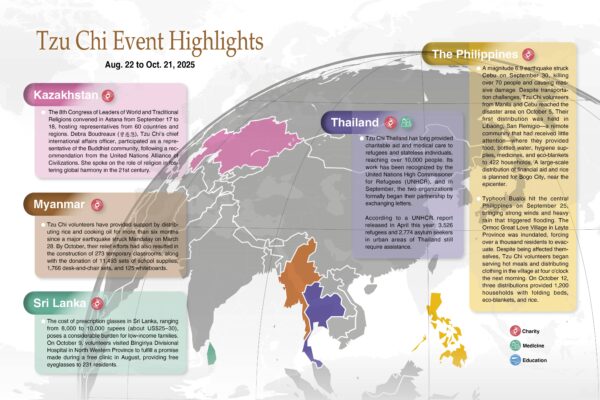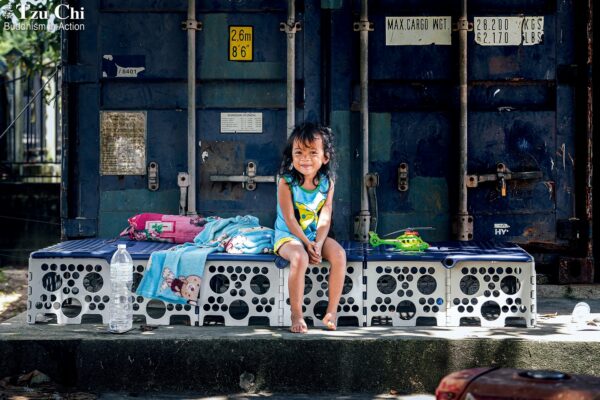By Yeh Tzu-hao
Translated by Wu Hsiao-ting
Photos by Huang Xiao-zhe and Hsiao Yiu-hwa
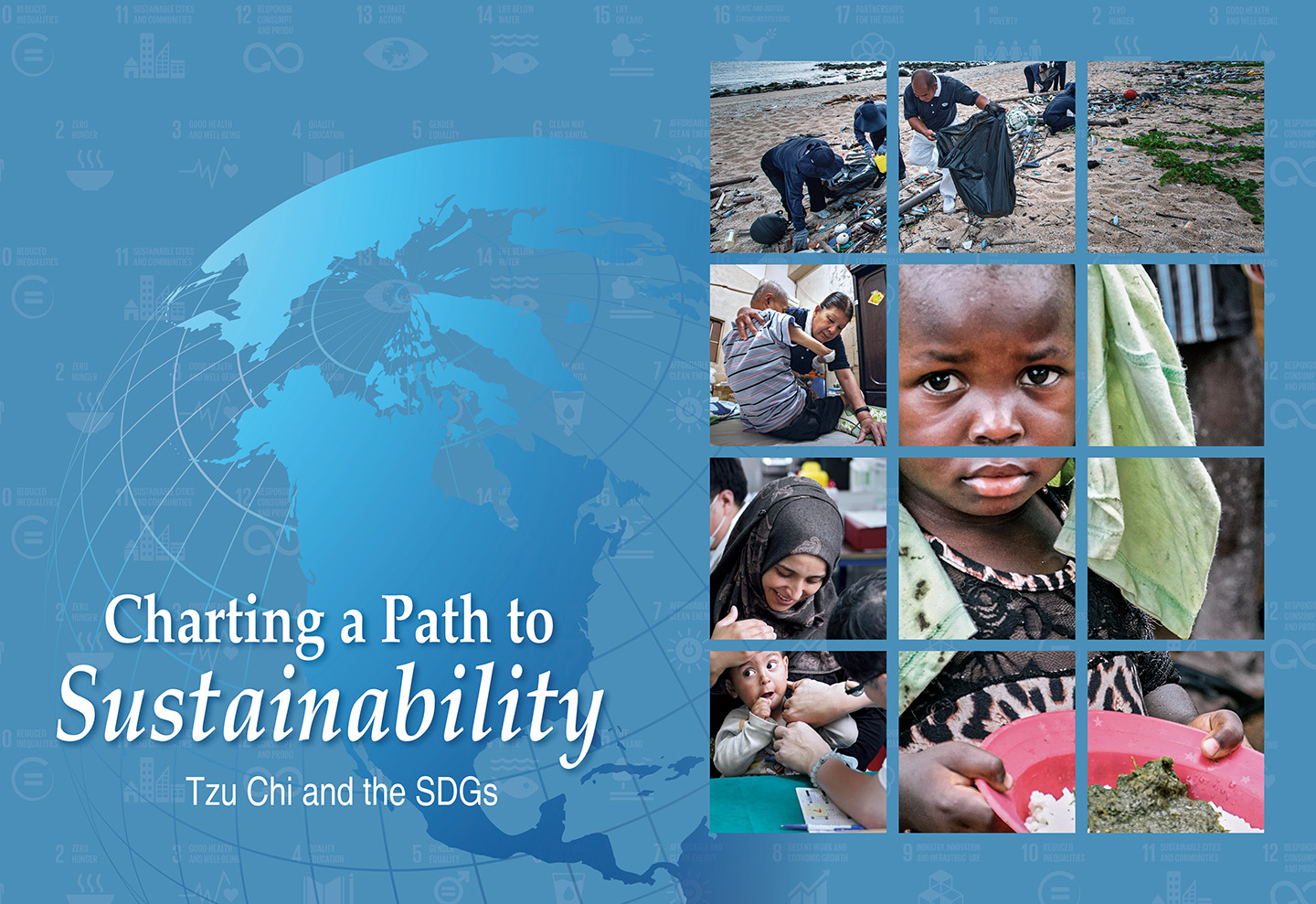
For the past eight years, the United Nations’ Sustainable Development Goals have guided global efforts to address crises that threaten human survival. Tzu Chi’s nearly 60 years of dedicated work align perfectly with these goals, tackling economic, social, and environmental issues to help chart a balanced path for current and future generations.
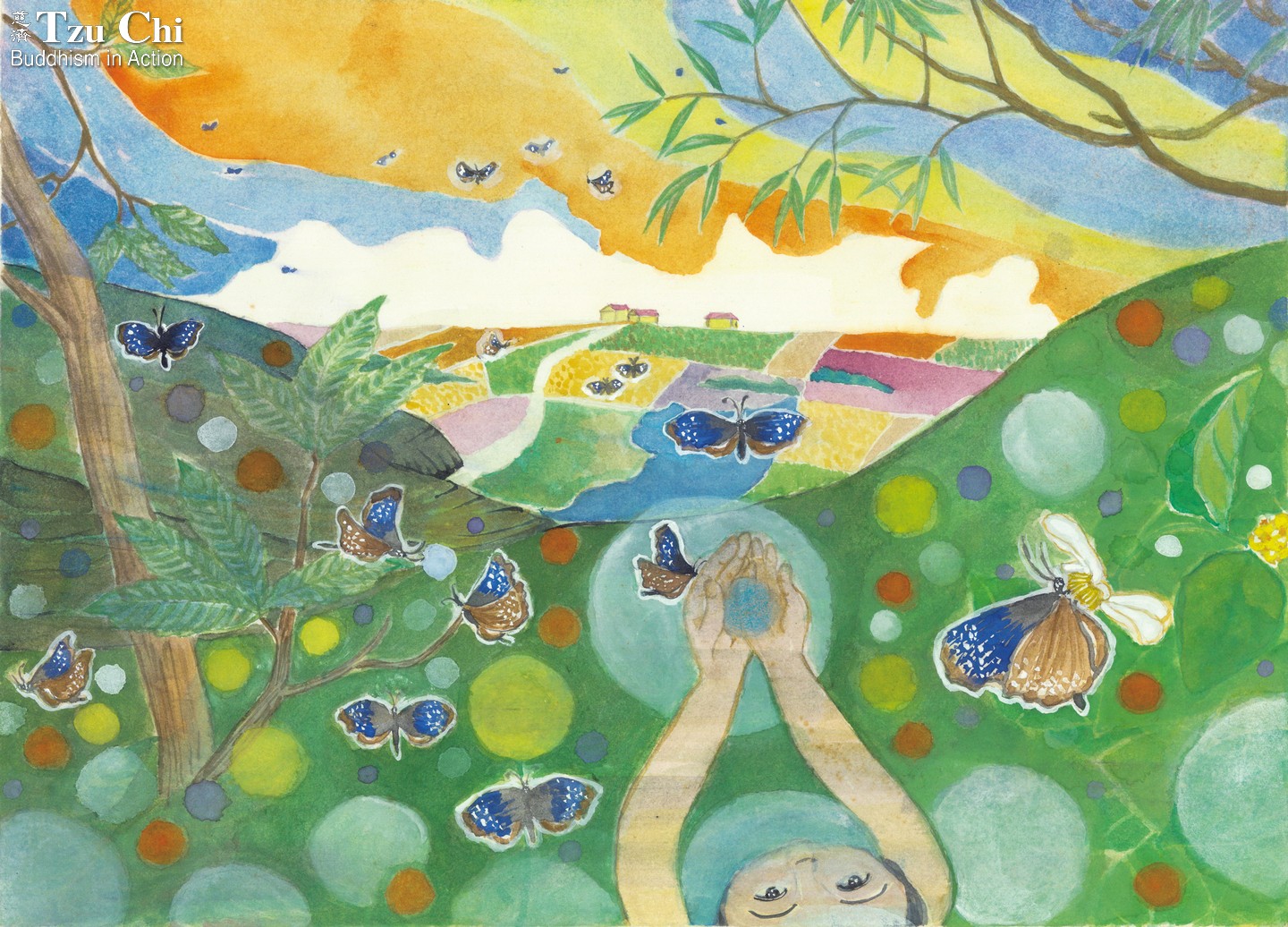
The United Nations Sustainable Development Goals aim to ensure a better future for present and future generations. Su Fang-pei
Sustainable development has become a major international issue in recent years. Many people are familiar with the colorful icons of the United Nations (UN) Sustainable Development Goals (SDGs), and students who have taken environmental education courses might even be able to recite goals like “No Poverty,” “Zero Hunger,” and “Climate Action.” But what exactly does sustainable development mean? People often understand the concept differently, based on their own perspectives or concerns, leading to a variety of interpretations.
“In the past, discussions about sustainable development mostly focused on environmental protection. However, it encompasses much more,” said Professor Yeh Shin-cheng (葉欣誠) from the Graduate Institute of Sustainable Management and Environmental Education at National Taiwan Normal University, in northern Taiwan. For example, he emphasized that the United Nations has always highlighted the role of income in sustainable development, a perspective that differs from the common environmental focus in Taiwan: “Twenty years ago, UN Secretary-General Kofi Annan highlighted that poverty is the greatest obstacle to sustainable development.”
Professor Yeh pointed out that as early as 1987, the UN’s World Commission on Environment and Development (now the Brundtland Commission) defined sustainable development as “development that meets the needs of the present without compromising the ability of future generations to meet their own needs.” This concept includes not only environmental but also social and economic dimensions. He continued, “The UN’s approach to sustainable development, viewed from a global perspective, prioritizes basic survival issues like poverty, hunger, education, and health, with environmental concerns being a secondary focus. After all, people must first ensure their own survival before they can focus on environmental protection.”
To advance sustainable development, the United Nations introduced the Millennium Development Goals (MDGs) in 2000 as the first 15-year plan aimed at addressing global challenges. The MDGs set eight objectives to be achieved by 2015, starting with the eradication of extreme poverty and hunger. That objective was followed by achieving universal primary education and promoting gender equality and women’s empowerment. Ensuring environmental sustainability was the seventh goal.
The current Sustainable Development Goals, building upon the MDGs, were established by the UN in 2015 as part of the 2030 Agenda for Sustainable Development. Launched in 2016, the SDGs address a broader range of issues than the MDGs. While the MDGs primarily targeted developing countries, the SDGs apply to both developing and developed countries, with more detailed and comprehensive targets.
For instance, the SDGs include goals like ensuring affordable and clean energy, improving climate change adaptation, and promoting sustainable management of natural resources. The 17 main goals, covering social, economic, and environmental areas, are divided into 169 specific targets that countries have committed to achieving by 2030.
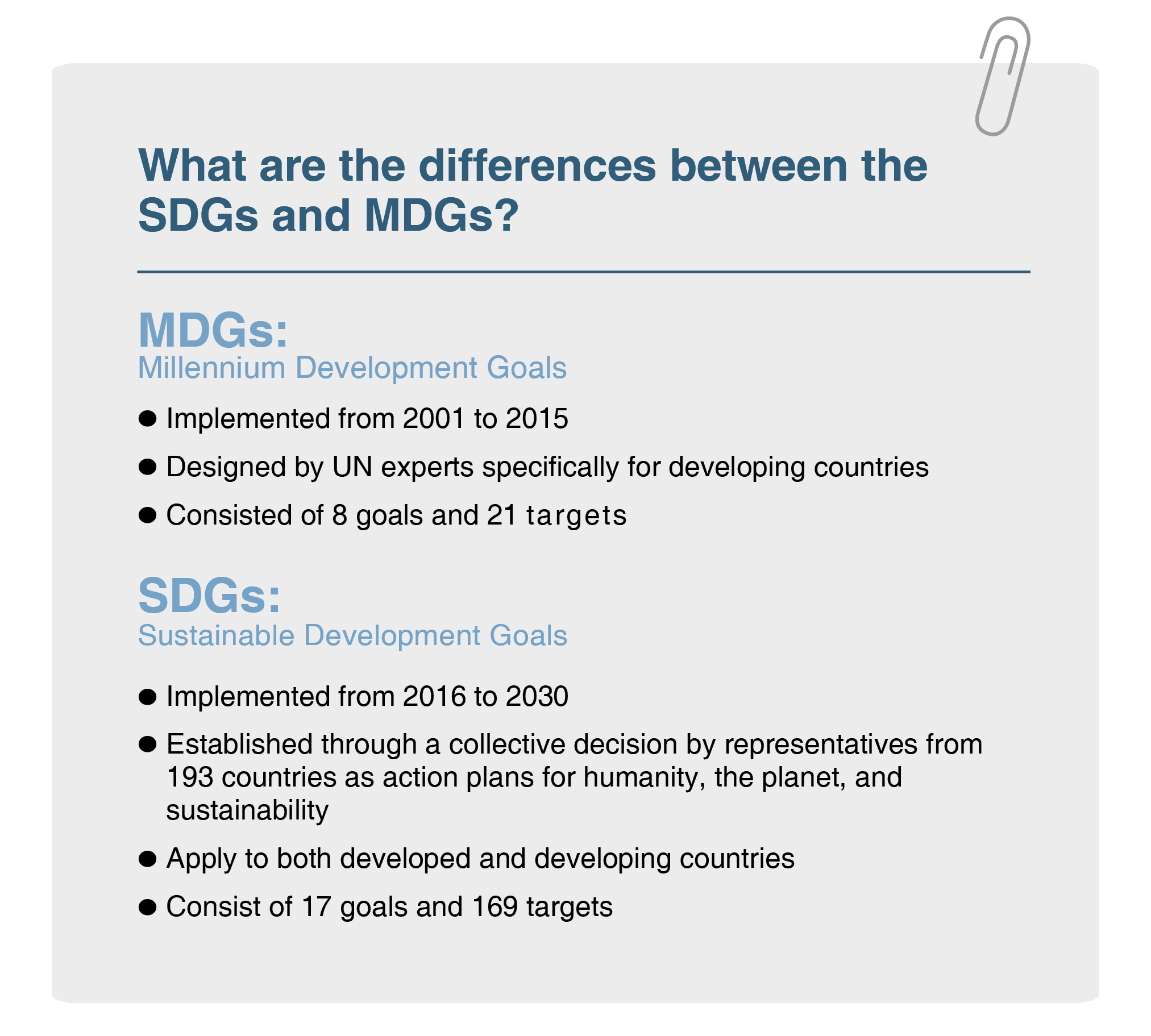
Leave no one behind
While the first 12 of the 17 SDGs primarily address social and economic issues, true sustainability requires a holistic approach that integrates social, economic, and environmental dimensions. True sustainability can only be achieved if we also ensure that the Earth’s ecological environment does not collapse.
The hottest year on record was 2023, according to the State of the Global Climate 2023 report from the World Meteorological Organization. Global temperatures are expected to increase in 2024. Human activities have pushed six out of nine planetary boundaries—such as global warming, biodiversity loss, land use changes, and the release of new chemical substances—beyond safe limits. Thus, addressing SDG 13 (Climate Action), SDG 14 (Life Below Water), and SDG 15 (Life on Land) is crucial.
To comply with international standards, many businesses and organizations have been striving to incorporate the SDGs into their operations and public welfare activities, taking measures such as conserving energy, reducing pollution and their carbon footprint, and improving labor welfare. However, achieving sustainable development involves not only addressing specific targets but also understanding and upholding the core principles of the SDGs: diversity, inclusion, and “leave no one behind.”
“People around the world differ in religion, ethnicity, skin color, language, politics, and culture,” Professor Yeh explained. “Discrimination is unacceptable; we cannot ignore or abandon someone just because they are different from us. This is the core spirit emphasized by the SDGs.”
The professor, who has long studied sustainability issues, recognizes Tzu Chi’s alignment with these principles through its efforts in alleviating poverty, providing disaster relief, and other endeavors. “Tzu Chi’s efforts tackle fundamental issues and promote inclusivity,” he said.
Of the 17 SDGs, the first 12 align closely with the essence and philosophy of Tzu Chi’s four major missions: charity, medicine, education, and culture. The environmental actions advocated by Tzu Chi volunteers to “coexist with the Earth,” such as recycling, vegetarianism, and simple living, correspond with the goals related to climate action.
The foundation also collaborates with partners to create safe living environments and support high-risk and vulnerable families in communities. For example, Tzu Chi collaborates with partners from various religions, including Catholicism and Islam, to assist international refugees. This results from believing in the equality of all beings and embodying the spirit of Great Love that transcends race, religion, and culture. This also aligns with the core values of the SDGs.
Yen Po-wen (顏博文), CEO of the Tzu Chi charity mission, uses the foundation’s contributions up to 2023 to illustrate the organization’s global impact. Tzu Chi has cared for over five million families across 40 countries and regions. The foundation has built more than 22,000 permanent homes in 18 countries and regions. The Tzu Chi International Medical Association has conducted over 18,000 free clinic events in 58 countries, providing medical care and relief to more than four million people. In response to climate change and environmental disasters, Tzu Chi implements disaster reduction projects, promotes disaster prevention education, and establishes disaster relief information platforms to mitigate disaster impacts.
“Today, there is extensive discussion on the topic of sustainable development,” said Yen. “Tzu Chi’s missions comprehensively address all 17 of the United Nations’ sustainable development goals.” He believes that the foundation’s dedication to the common good explains why its environmental and social efforts are so closely aligned with the SDGs.
Starting with the September 2024 issue, Tzu Chi Bimonthly will feature a series of articles titled “Tzu Chi and the SDGs.” The series will document how the foundation’s nearly 60 years of efforts have advanced and embodied the principles of sustainable development across five major areas: eliminating poverty and hunger, addressing climate change, caring for the elderly and children, practicing environmental education, and collaborating with global partners for sustainable development.
As Dharma Master Cheng Yen says, “Don’t worry how distant your journey is, as long as you find the way.” By evaluating our work in light of the SDGs’ ideals and vision and looking towards the future, we can gain a clearer perspective on our past accomplishments and chart the course for our ongoing and future efforts.


